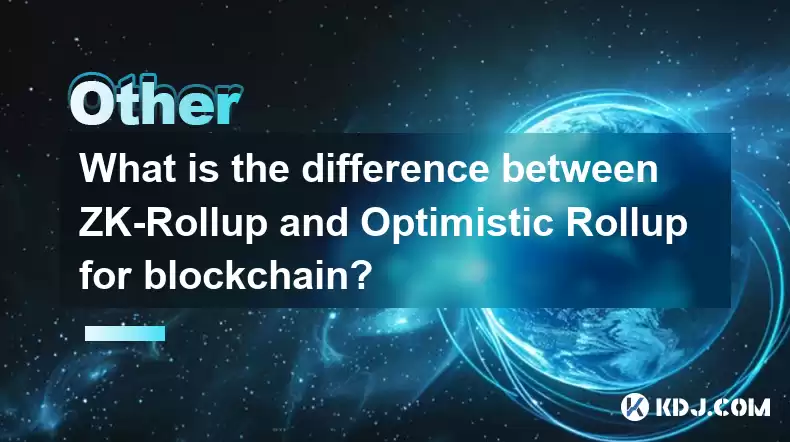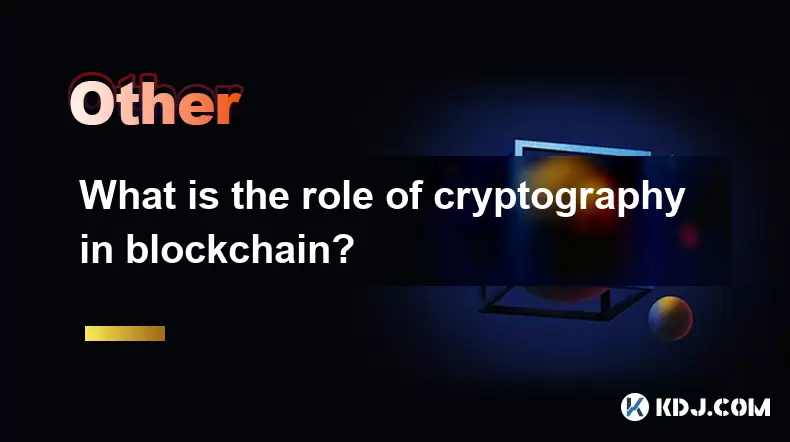-
 Bitcoin
Bitcoin $113600
0.08% -
 Ethereum
Ethereum $3464
-0.62% -
 XRP
XRP $2.859
-3.36% -
 Tether USDt
Tether USDt $0.9999
0.03% -
 BNB
BNB $746.7
-0.69% -
 Solana
Solana $161.1
-1.47% -
 USDC
USDC $0.0000
0.03% -
 TRON
TRON $0.3264
0.03% -
 Dogecoin
Dogecoin $0.1965
-1.08% -
 Cardano
Cardano $0.7232
1.37% -
 Hyperliquid
Hyperliquid $38.56
0.67% -
 Sui
Sui $3.428
-0.53% -
 Stellar
Stellar $0.3804
-0.38% -
 Chainlink
Chainlink $16.05
0.99% -
 Bitcoin Cash
Bitcoin Cash $538.9
0.92% -
 Hedera
Hedera $0.2391
1.17% -
 Ethena USDe
Ethena USDe $1.001
0.03% -
 Avalanche
Avalanche $21.22
-0.76% -
 Toncoin
Toncoin $3.668
2.69% -
 Litecoin
Litecoin $109.8
2.60% -
 UNUS SED LEO
UNUS SED LEO $8.967
0.06% -
 Shiba Inu
Shiba Inu $0.00001210
0.19% -
 Polkadot
Polkadot $3.582
1.35% -
 Uniswap
Uniswap $9.048
1.27% -
 Monero
Monero $300.1
1.23% -
 Dai
Dai $0.0000
0.01% -
 Bitget Token
Bitget Token $4.301
0.18% -
 Pepe
Pepe $0.00001036
-0.51% -
 Cronos
Cronos $0.1305
-0.82% -
 Aave
Aave $256.6
1.47%
What is the difference between ZK-Rollup and Optimistic Rollup for blockchain?
ZK-Rollup uses zero-knowledge proofs for secure, private transactions with immediate finality, while Optimistic Rollup relies on fraud proofs, offering scalability but with delays.
Apr 14, 2025 at 07:07 pm

Introduction to Layer 2 Scaling Solutions
In the world of blockchain, scalability is a significant concern. As more users and transactions are added to the network, the system can become slow and expensive. To address this, developers have created Layer 2 scaling solutions like ZK-Rollup and Optimistic Rollup. These technologies aim to increase transaction throughput and reduce costs while maintaining the security of the underlying blockchain. Understanding the differences between ZK-Rollup and Optimistic Rollup is crucial for anyone interested in the future of blockchain scalability.
What is ZK-Rollup?
ZK-Rollup stands for Zero-Knowledge Rollup. It is a Layer 2 scaling solution that uses zero-knowledge proofs to batch multiple transactions into a single transaction on the main blockchain. This approach significantly reduces the data that needs to be stored on the blockchain, thereby increasing scalability.
In ZK-Rollup, the transactions are processed off-chain, and only the proof of the transaction's validity is submitted to the main blockchain. This method ensures that the transactions are secure and verifiable without revealing the details of the transactions. ZK-Rollup is particularly valued for its high security and privacy features, as it does not require users to trust the operator of the rollup.
How ZK-Rollup Works
To understand how ZK-Rollup functions, let's break down the process:
- Transaction Collection: Multiple transactions are collected off-chain by the ZK-Rollup operator.
- Transaction Processing: These transactions are processed and grouped into a batch.
- Zero-Knowledge Proof Generation: A zero-knowledge proof is generated to verify the validity of the batch without revealing the transaction details.
- Submission to Main Chain: The proof and minimal data (e.g., account balances) are submitted to the main blockchain.
- Verification: The main blockchain verifies the proof, ensuring the batch of transactions is valid.
This method allows ZK-Rollup to achieve high throughput and low transaction fees while maintaining the security and privacy of the blockchain.
What is Optimistic Rollup?
Optimistic Rollup is another Layer 2 scaling solution that aims to increase the scalability of blockchain networks. Unlike ZK-Rollup, Optimistic Rollup assumes that all transactions are valid by default and only performs validation if a fraud proof is submitted.
In Optimistic Rollup, transactions are also processed off-chain, but the full transaction data is stored on the main blockchain. This allows for greater transparency but comes with a longer withdrawal period, as users must wait for a challenge period to pass before their funds can be moved back to the main chain.
How Optimistic Rollup Works
The process of Optimistic Rollup can be described as follows:
- Transaction Submission: Users submit transactions to the Optimistic Rollup operator.
- Transaction Processing: The operator processes these transactions off-chain and posts the transaction data to the main blockchain.
- Challenge Period: A challenge period is initiated, during which anyone can submit a fraud proof if they believe a transaction is invalid.
- Verification: If no fraud proof is submitted within the challenge period, the transactions are considered valid and finalized.
- Withdrawal: After the challenge period, users can withdraw their funds to the main blockchain.
This approach allows Optimistic Rollup to achieve high scalability but requires a longer time for transaction finality and withdrawal.
Key Differences Between ZK-Rollup and Optimistic Rollup
Understanding the key differences between ZK-Rollup and Optimistic Rollup is essential for choosing the right scaling solution for specific use cases. Here are the main points of comparison:
Security and Privacy: ZK-Rollup offers higher security and privacy as it uses zero-knowledge proofs to validate transactions without revealing transaction details. Optimistic Rollup relies on fraud proofs and requires users to trust the operator during the challenge period, which can be less secure and less private.
Transaction Finality: ZK-Rollup achieves immediate transaction finality as the proof is verified on the main blockchain. Optimistic Rollup requires a challenge period, which can delay transaction finality and withdrawal times.
Scalability: Both solutions offer significant scalability improvements, but ZK-Rollup can process transactions more quickly due to the immediate finality, while Optimistic Rollup may have slightly higher throughput due to less complex validation processes.
Complexity and Cost: ZK-Rollup is more complex and computationally intensive due to the need for zero-knowledge proofs, which can result in higher operational costs. Optimistic Rollup is simpler to implement and operate, leading to lower costs for the operator.
Use Cases for ZK-Rollup and Optimistic Rollup
The choice between ZK-Rollup and Optimistic Rollup depends on the specific requirements of the blockchain application. Here are some use cases for each:
ZK-Rollup: Ideal for applications that require high security and privacy, such as decentralized finance (DeFi) platforms, where users need to ensure the confidentiality of their transactions. It is also suitable for applications that require immediate transaction finality, such as high-frequency trading platforms.
Optimistic Rollup: Suitable for applications that prioritize scalability and lower operational costs, such as gaming platforms or social media applications on the blockchain. It is also a good choice for applications where users are willing to wait for a challenge period to ensure transaction validity.
Conclusion
Both ZK-Rollup and Optimistic Rollup are powerful Layer 2 scaling solutions that address the scalability challenges faced by blockchain networks. While ZK-Rollup offers higher security and privacy with immediate transaction finality, Optimistic Rollup provides greater scalability and lower costs with a longer withdrawal period. Understanding these differences is crucial for developers and users looking to leverage these technologies to enhance the performance of their blockchain applications.
Frequently Asked Questions
Q1: Can ZK-Rollup and Optimistic Rollup be used together in a single blockchain network?
Yes, it is possible to use both ZK-Rollup and Optimistic Rollup within the same blockchain network. This approach can provide a hybrid solution that leverages the strengths of both technologies. For example, a network could use ZK-Rollup for transactions requiring high privacy and security and Optimistic Rollup for transactions where scalability and lower costs are more important.
Q2: How do the gas fees compare between ZK-Rollup and Optimistic Rollup?
Gas fees for ZK-Rollup are generally lower than those for Optimistic Rollup because ZK-Rollup only submits minimal data and a proof to the main blockchain. Optimistic Rollup, on the other hand, submits full transaction data, which can result in higher gas fees. However, the exact fees can vary depending on the specific implementation and the blockchain network.
Q3: Are there any specific blockchain networks that have adopted ZK-Rollup or Optimistic Rollup?
Several blockchain networks have adopted these scaling solutions. For example, Ethereum has seen the implementation of both ZK-Rollup and Optimistic Rollup. Projects like Loopring and StarkWare use ZK-Rollup, while Arbitrum and Optimism utilize Optimistic Rollup. These implementations demonstrate the practical application of these technologies in real-world blockchain networks.
Q4: How does the user experience differ between ZK-Rollup and Optimistic Rollup?
The user experience with ZK-Rollup is generally smoother due to immediate transaction finality, which means users can quickly confirm their transactions. With Optimistic Rollup, users may experience a delay due to the challenge period, which can affect the speed of withdrawals and overall user satisfaction. However, both solutions aim to provide a seamless experience by handling most of the complexity behind the scenes.
Disclaimer:info@kdj.com
The information provided is not trading advice. kdj.com does not assume any responsibility for any investments made based on the information provided in this article. Cryptocurrencies are highly volatile and it is highly recommended that you invest with caution after thorough research!
If you believe that the content used on this website infringes your copyright, please contact us immediately (info@kdj.com) and we will delete it promptly.
- SOLF Token vs. BONK: Predicting a $300 Solana in 2025?
- 2025-08-03 16:30:16
- Sei, Injective, and Bitcoin Dominance: Navigating the Crypto Landscape
- 2025-08-03 16:50:15
- UK Lifts Ban on Crypto ETNs: Bitcoin Set for Retail Boom?
- 2025-08-03 16:30:16
- Coin Master Free Spins: Maximize Your Game with Daily Links (August 2025)
- 2025-08-03 16:50:15
- Bitcoin Liquidity, Osmosis Zone, and Investor Interest: A Deep Dive
- 2025-08-03 15:16:44
- Web3, Sports, and Computing Power: A New Ballgame
- 2025-08-03 15:16:44
Related knowledge

What is the difference between on-chain and off-chain transactions?
Aug 02,2025 at 04:22pm
Understanding On-Chain TransactionsOn-chain transactions refer to digital asset transfers that are recorded directly on a blockchain ledger. These tra...

What is a node's role in a blockchain network?
Aug 03,2025 at 03:16pm
Understanding the Function of a Node in a Blockchain NetworkA node is a fundamental component of any blockchain network, acting as a participant that ...

What is the double-spending problem and how does blockchain prevent it?
Aug 02,2025 at 01:07pm
Understanding the Double-Spending ProblemThe double-spending problem is a fundamental challenge in digital currency systems where the same digital tok...

What is the difference between a blockchain and a database?
Aug 01,2025 at 09:36pm
Understanding the Core Structure of a BlockchainA blockchain is a decentralized digital ledger that records data in a series of immutable blocks linke...

How does blockchain handle scalability?
Aug 02,2025 at 02:58pm
Understanding Blockchain Scalability ChallengesBlockchain scalability refers to a network's ability to handle an increasing volume of transactions wit...

What is the role of cryptography in blockchain?
Aug 03,2025 at 03:42pm
Understanding the Foundation of Blockchain SecurityCryptography is the cornerstone of blockchain technology, providing the essential tools to ensure d...

What is the difference between on-chain and off-chain transactions?
Aug 02,2025 at 04:22pm
Understanding On-Chain TransactionsOn-chain transactions refer to digital asset transfers that are recorded directly on a blockchain ledger. These tra...

What is a node's role in a blockchain network?
Aug 03,2025 at 03:16pm
Understanding the Function of a Node in a Blockchain NetworkA node is a fundamental component of any blockchain network, acting as a participant that ...

What is the double-spending problem and how does blockchain prevent it?
Aug 02,2025 at 01:07pm
Understanding the Double-Spending ProblemThe double-spending problem is a fundamental challenge in digital currency systems where the same digital tok...

What is the difference between a blockchain and a database?
Aug 01,2025 at 09:36pm
Understanding the Core Structure of a BlockchainA blockchain is a decentralized digital ledger that records data in a series of immutable blocks linke...

How does blockchain handle scalability?
Aug 02,2025 at 02:58pm
Understanding Blockchain Scalability ChallengesBlockchain scalability refers to a network's ability to handle an increasing volume of transactions wit...

What is the role of cryptography in blockchain?
Aug 03,2025 at 03:42pm
Understanding the Foundation of Blockchain SecurityCryptography is the cornerstone of blockchain technology, providing the essential tools to ensure d...
See all articles

























































































